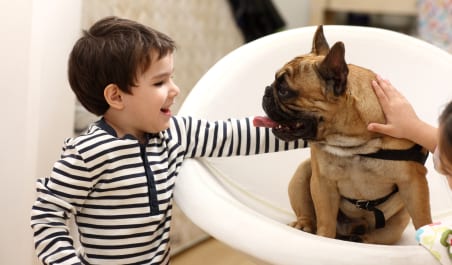Having kids and pets can present occasional problems. Having kids and a flea-infested pet is even harder to deal with. An article that was referred to us recently talks about some surprising findings that pet owners and parents alike may want to pay attention to.
Flea-control collars may seem like the easy solution but they often contain harmful chemicals that can not only harm your pets, but your family, too. Many products are safe when used as directed, but that doesn’t go for ALL products. In some products, harsh chemicals called tetrachlorvinphos and propoxur are used which can present dangers to pets and humans, especially kids who hug, pet and sleep with the family pet.
Tetrachlorvinphos (TCVP) is used in flea and tick collars, powders, and sprays, while propoxur is found only in the collars. Flea collars release the chemicals onto your pet’s fur, as they are spread when your pet licks his fur. These chemicals work by interrupting communication between nerve cells in fleas. Unfortunately, they can do the same in your pet and humans as well. In high amounts, these chemicals can cause nausea, vomiting, diarrhea, wheezing, sweating, and tearing eyes. In severe cases, these chemicals can cause muscle twitching, drooling, seizures, and even death.
Although the amounts of these chemicals in flea collars are typically not enough to affect humans directly, they may cause long-term health consequences. Propoxur is known to cause cancer in humans and TCVP is classified by the US EPA as a possible human carcinogen. TCVP has also been linked to hyperactivity and learning disabilities in children.
Pet collars expose children to levels of TCVP and propoxur that exceed the US EPA’s acceptable levels, according to an NRDC study published in 2009.
Toddlers are most at risk as they spend more time playing on the floor and putting whatever they find into their mouths.
So, what can you do to protect your children and your pets? Instead of using chemicals to treat your pet’s flea problem, your first line of defense should be to keep your dog or cat indoors and vacuum frequently to get rid of fleas and eggs around the house. Use chemical-free methods whenever possible. If necessary, try products made with natural ingredients like lemongrass, peppermint, rosemary and cedarwood. And, if that still doesn’t work to rid your pet of fleas, the safest chemical option, according to NRDC, are pill-based flea treatments.





